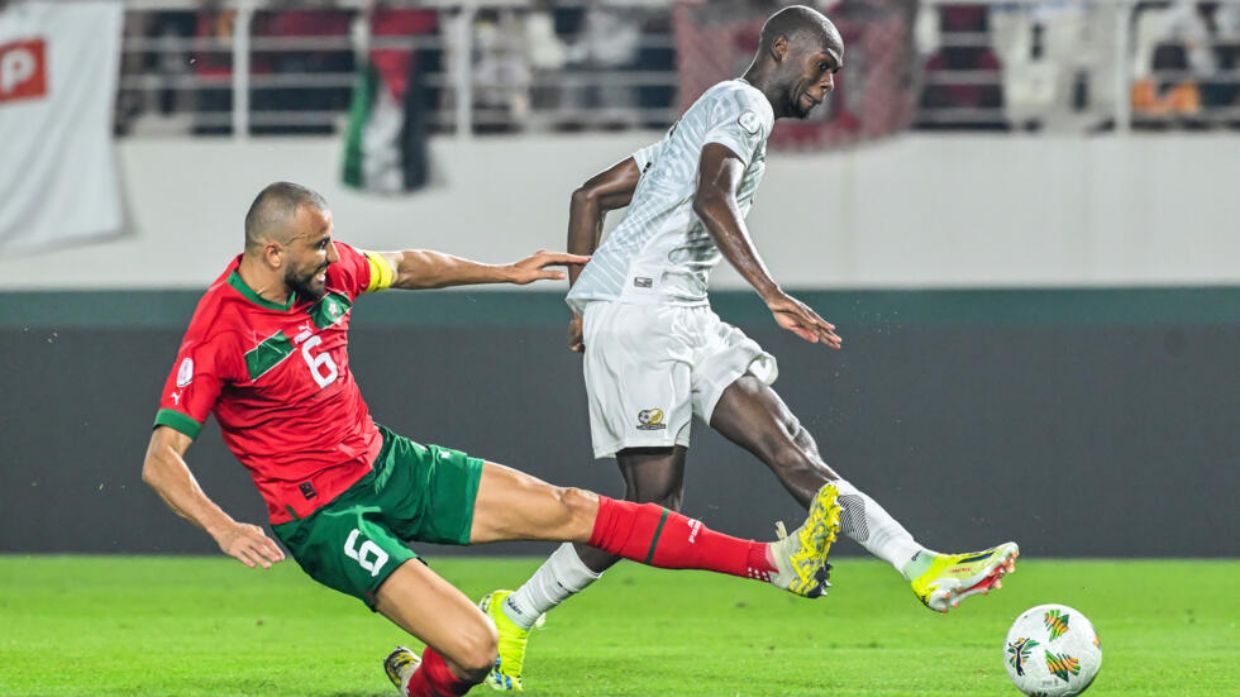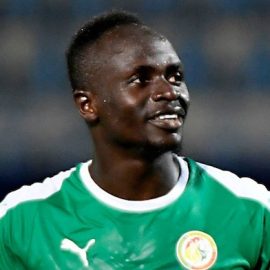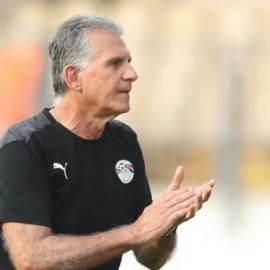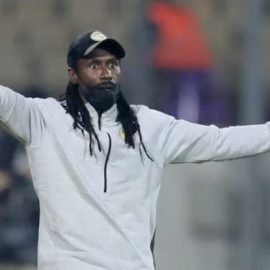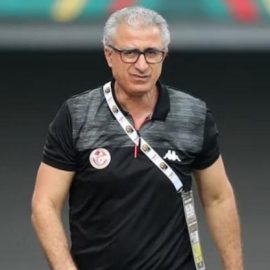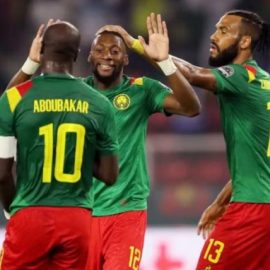On the verge of hosting the 2008 African Cup of Nations, Ghana has uniformly adopted the green, red, and gold colours. Some have tattoed them on their backs, some are wearing them around their necks, some are leaving them on their natural medium but using that medium to decorate everything and anything: FLAGS cover buildings, stores, office bureaus, cars, taxi-cabs, lamp posts, rich houses and slums. Politicians themselves are becoming fully outfitted too: deputy director general of the Ghana Education Service, Benedicta Naana Biney, was recently photographed donning an elegant green/gold/red dress. In the city of Sekondi-Takoradi (which Monday will host the much anticipated Nigeria vs. Ivory Coast match) they have even painted the bridges. The colours of the Black Stars of Ghana are everywhere.
In a continent where tribal divisions are ever-so present and take a huge part in country politics, the unifying factor of the beautiful game is something that can’t be understimated. Ghanainan newspapers are already tried to quantify how much of a “nationalistic effect” will be produced thanks to the African Cup of Nations, a phenomenon amplified by the fact the country is hosting the competition, now for the 4th time in its history. Meanwhile, preparations for the event have been undergoing non-stop in the past few months, not only in terms of match facilities but also general presentation of the country (over 1 million supporters are expected this month). Among these: trash collection. Accra, the Ghanaian capital, produces every day 2,000 tons of refuse, a good third of which unfortunately are never completely collected. Garbage thus accumulates everywhere, even in front of hotels, and little kids have an added obstacle to dribble during improvised street soccer matches. In the last week however, cleaning crews are working double and triple shifts in order to get everything cleaned up.
On top of cleanliness however, African Cup-tourism will have many other prerequisites. Business-wise especially. Rates for hotel rooms are triple the normal value this month, sometimes reaching $350 a night. But in case you’re willing to spend that much, don’t bother trying: buildings exhibit the “No Vacancy” sign just about everywhere. In the city of Sekondi-Takoradi, 4 schools have been equipped with room & board facilities in order to accomodate supporters and members of the press.
Small merchandising is also a big success: flags, pins, scarves and other supporter-goodies are on sale at just about every street corner. Flags in particular are the nº1 item in terms of popularity: for one Ghanaian cedi (1 GHS is equivalent to approximately $1 or €1) you can get the smallest size. For medium-sized flags (the norm for any self-respecting supporter) prices already climb to 10-15 GHS, while those that wrap around street buildings cost over 50 GHS. To realize how much of an expense that is, the Gross National Income (GNI) per capita of Ghana is about US$450…
The African Cup of Nations isn’t only business and street cleaning though. In a continent where music and dancing are an integral part of local culture, soccer is also a moment of feast. Yesterday, half of the population of Accra reunited in Indipendence Square for the “MTN Go Africa” concert, with Ghanaian pop star Satiri and various Ugandan, Ivorian, Nigerian and Togolese music groups. Reggae music is still hugely popular here, as confirmed by the presence of the musical band Steel Pulse. It’s “No Woman No Cry” time, and with the major African soccer event just ready to begin, who in their right mind would want to cry?
Special thanks to Stefano Boldrini and La Gazzetta dello Sport for their special report on the Ghana 2008 African Cup of Nations.
Marco Pantanella writes for the mCalcio blog
Also See:
Ghana 2008 Fixtures
African Cup of Nations 08 – Team Kits
ACN 08 Preview
Add Sportslens to your Google News Feed!
